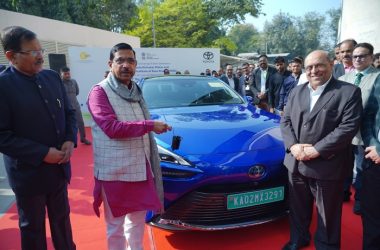India has taken a major stride in its journey toward energy independence with the rapid advancement of its Ethanol Blending Programme (EBP). As the world’s third-largest energy consumer, India has long been reliant on oil imports to fuel its economy, a dependence that leaves the country vulnerable to volatile global markets and drains foreign reserves. Ethanol blending, however, offers a promising alternative—one that is both domestically produced and environmentally beneficial.
Since ethanol blending was first piloted in 2001, its potential has been realized through significant policy reforms in recent years. These reforms have doubled ethanol production capacity to 1,623 crore liters by September 2024 and helped raise ethanol’s share in fuel consumption to 15%, with a goal of reaching 20% by 2025. This progression not only curtails oil imports but also slashes carbon emissions, aligning with India’s goals for a cleaner, more sustainable energy future.
Fueling Economic Growth, Reducing Environmental Impact
As a biofuel, ethanol is derived from the fermentation of sugarcane or similar biomass. Mixed with gasoline, it reduces carbon emissions and pollution, contributing to public health and environmental quality. Beyond environmental benefits, ethanol blending invigorates India’s rural economy by creating new revenue streams for farmers. Sugarcane farmers, in particular, stand to gain from rising demand for ethanol, while rural communities benefit from job creation and economic activity.
Government Pushes Target to 2025, Demonstrating Strong Commitment
Originally set for 2030, the goal for achieving 20% ethanol blending has been advanced to 2025, underscoring the government’s commitment to rapid progress. This accelerated timeline was highlighted at the recent 7th G-STIC Delhi Conference, where Petroleum and Natural Gas Minister Hardeep Singh Puri praised India’s ethanol success story, emphasizing how the programme is setting the foundation for broader sustainable energy initiatives.
Ethanol as a Pivotal Biofuel for India’s Future
India’s dependence on fossil fuels remains substantial, especially in the road transportation sector, where biofuels like ethanol currently meet just 2% of the demand. Ethanol’s environmental and economic benefits, however, make it a strategic focus for reducing fossil fuel use and fostering energy independence. Additionally, ethanol supports India’s “Make in India” initiative and aligns with the Swachh Bharat Mission, contributing to national goals on multiple fronts.
Key Milestones and Reforms Powering the Ethanol Revolution
From policy amendments to economic incentives, the government has introduced numerous measures to support ethanol production and blending. The modified Pradhan Mantri JI-VAN Yojana, approved in August 2024, is one such initiative, extending the scheme’s scope to include advanced biofuels from diverse feedstocks such as agricultural waste and algae. This scheme, paired with reduced GST on ethanol and state-friendly production policies, has significantly boosted the industry’s growth trajectory.
India’s roadmap for 20% blending requires nearly 1,700 crore liters of ethanol production capacity, a goal deemed feasible due to rising demand from motor vehicles and expanding infrastructure. Public Sector Oil Marketing Companies (OMCs) have also played a critical role by securing a steady supply through procurement programs, ensuring the programme’s success and market stability.
Economic and Environmental Wins Drive Momentum
India’s Ethanol Blending Programme has achieved substantial milestones, including the substitution of 181 lakh metric tons of crude oil and a reduction of 544 lakh metric tons of CO2 emissions. Over the past decade, foreign exchange savings from reduced oil imports have totaled ₹1,06,072 crore, reflecting the program’s significant economic impact.
A Blueprint for Energy Resilience
India’s ethanol drive reflects a bold, multi-dimensional strategy that combines economic, environmental, and rural development objectives. With the goal of 20% ethanol blending by 2025 within sight, India stands as a leader in biofuel adoption. By reducing fossil fuel reliance, empowering farmers, and improving public health, the Ethanol Blending Programme marks a pivotal chapter in India’s sustainable energy journey. The country’s commitment to green energy sets a robust example for other nations, showcasing a blueprint for achieving energy security through biofuel innovation.







